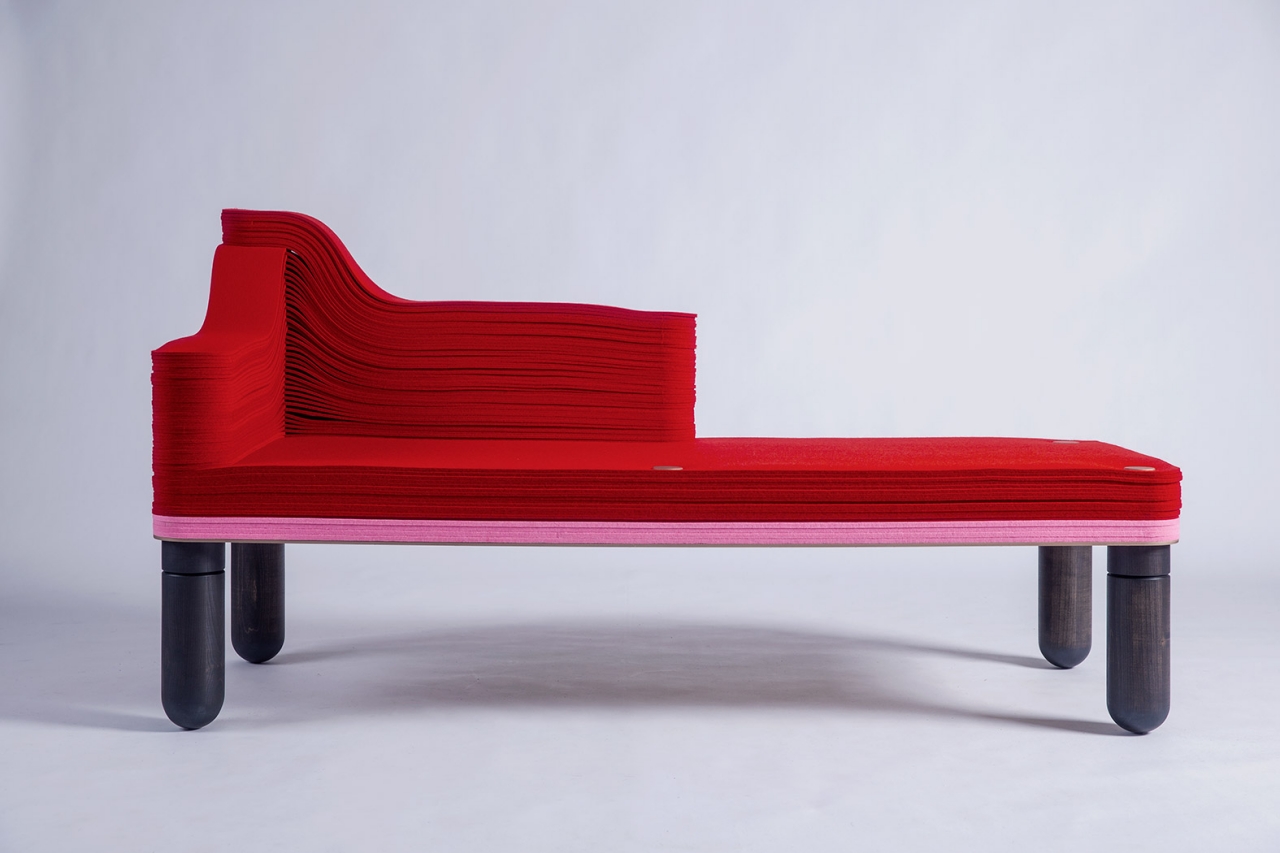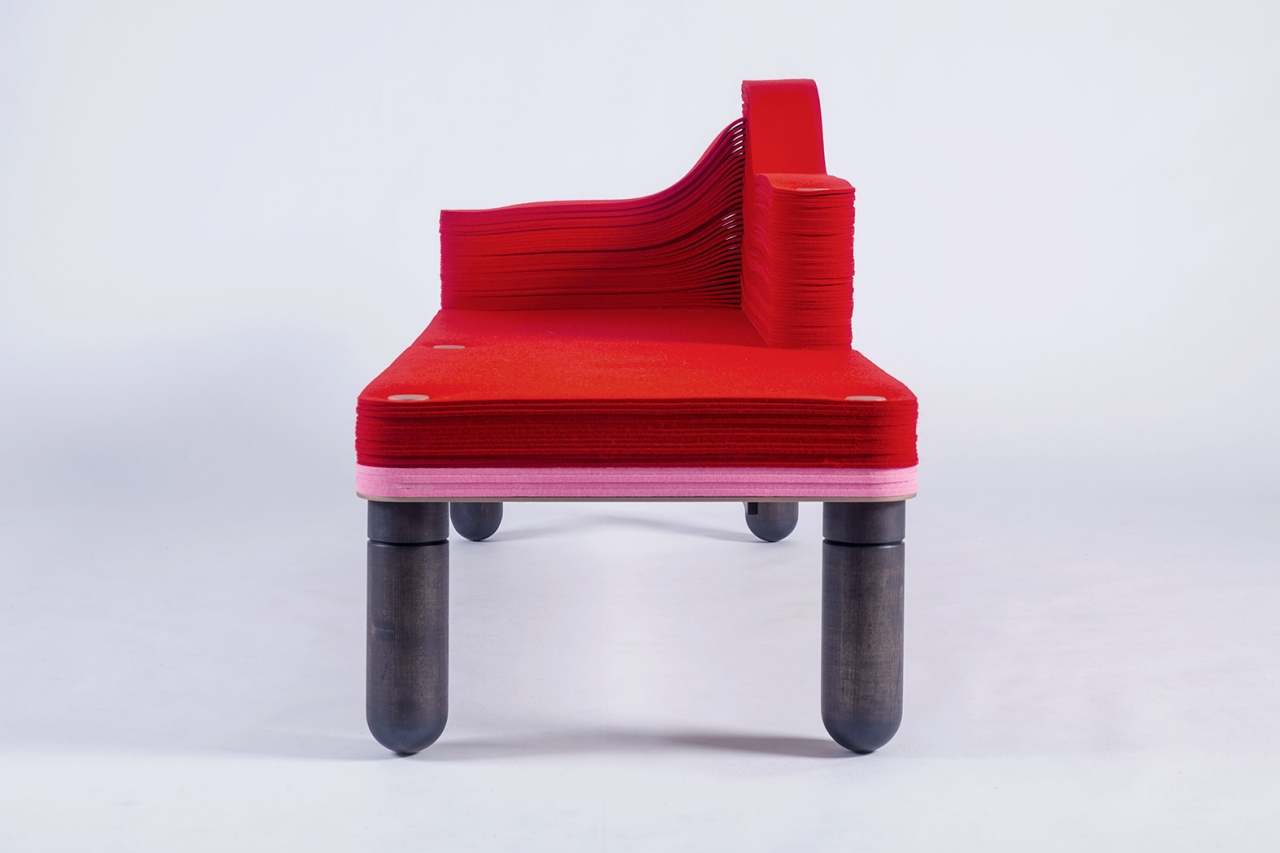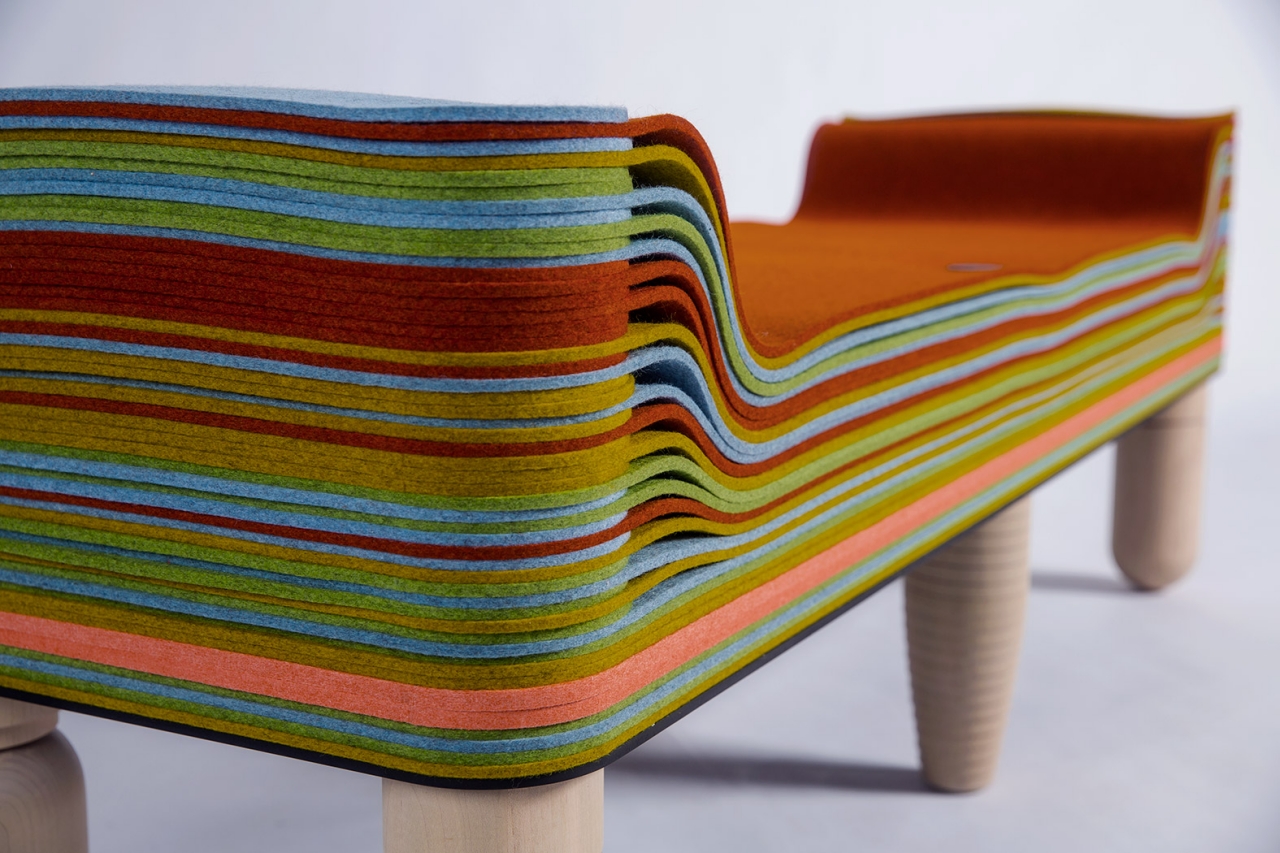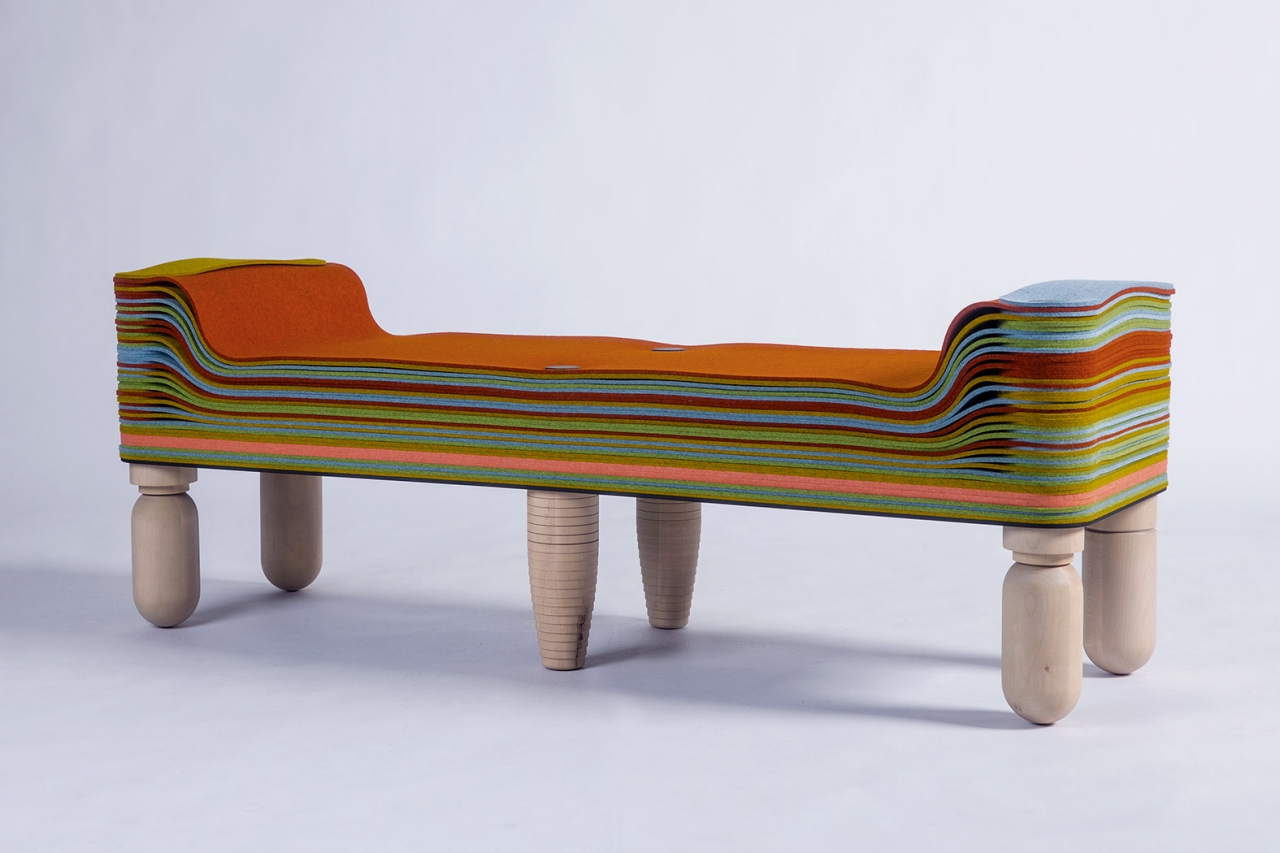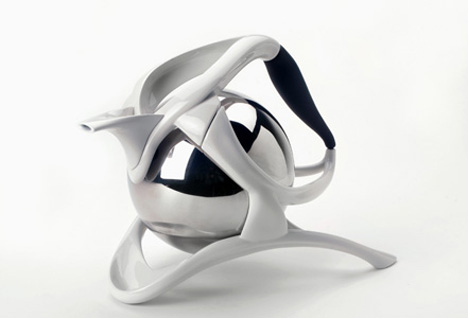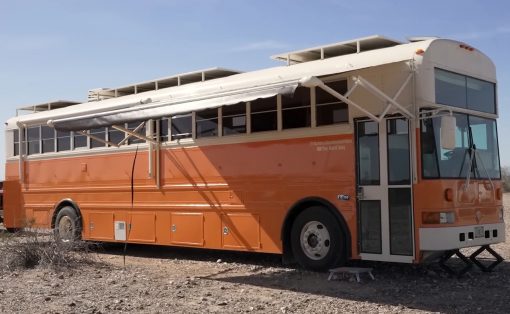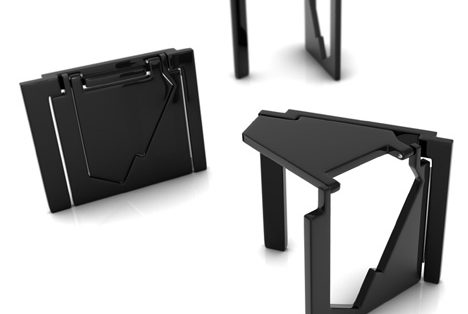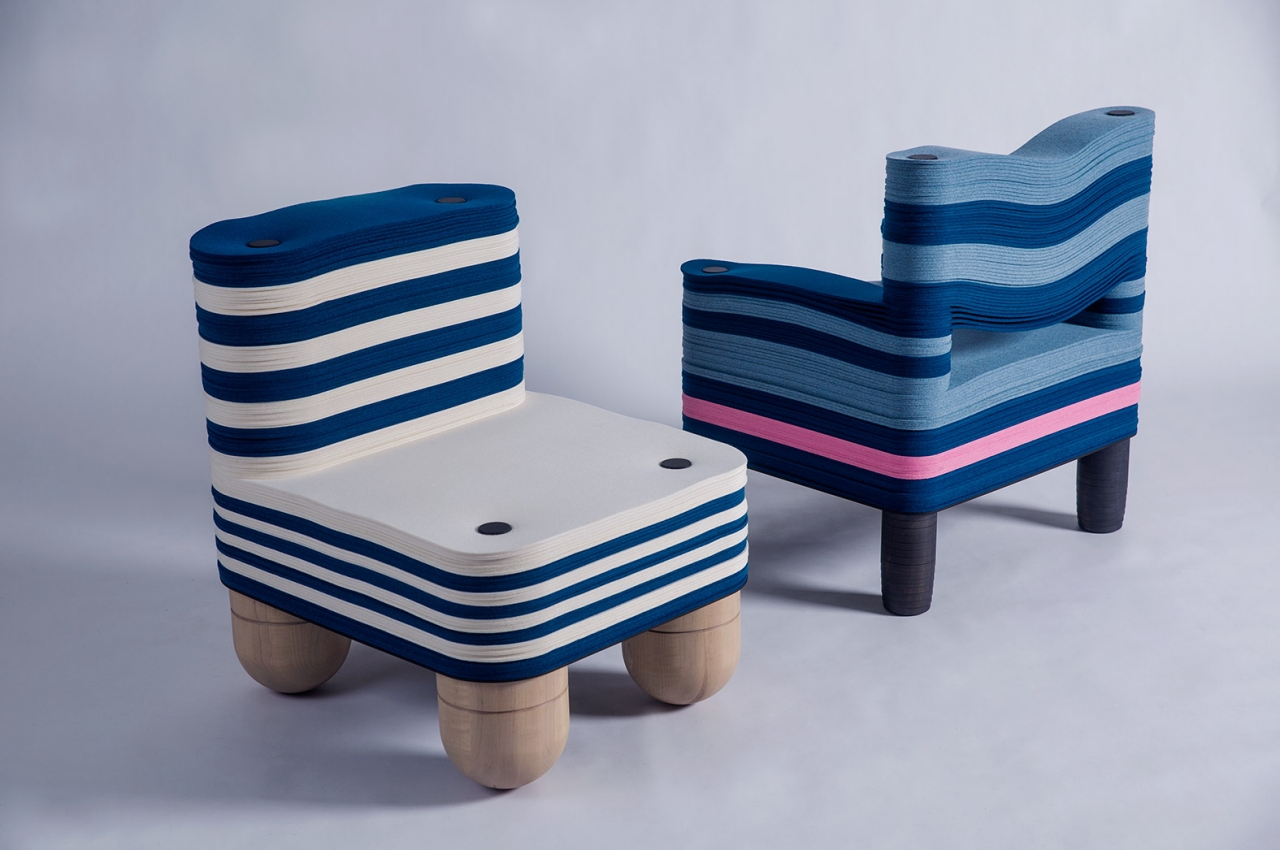
Surplus materials and offcuts are often reused to create art pieces that try to send a message. A new system, however, tries to turn what is considered waste into sustainable furniture for the living room that you can actually use and sit on.
The demand for clothing and furniture upholstery has probably gone up in the past few years, as more people become more attuned to well-designed products. That means more materials are used for production, which unfortunately also means more scraps are left on the cutting room floor, quite literally. While some of these materials are biodegradable or at least recyclable, one design firm is putting them to good use to create furniture that not only looks comfortable but artistically striking as well.
Designer: Stacklab
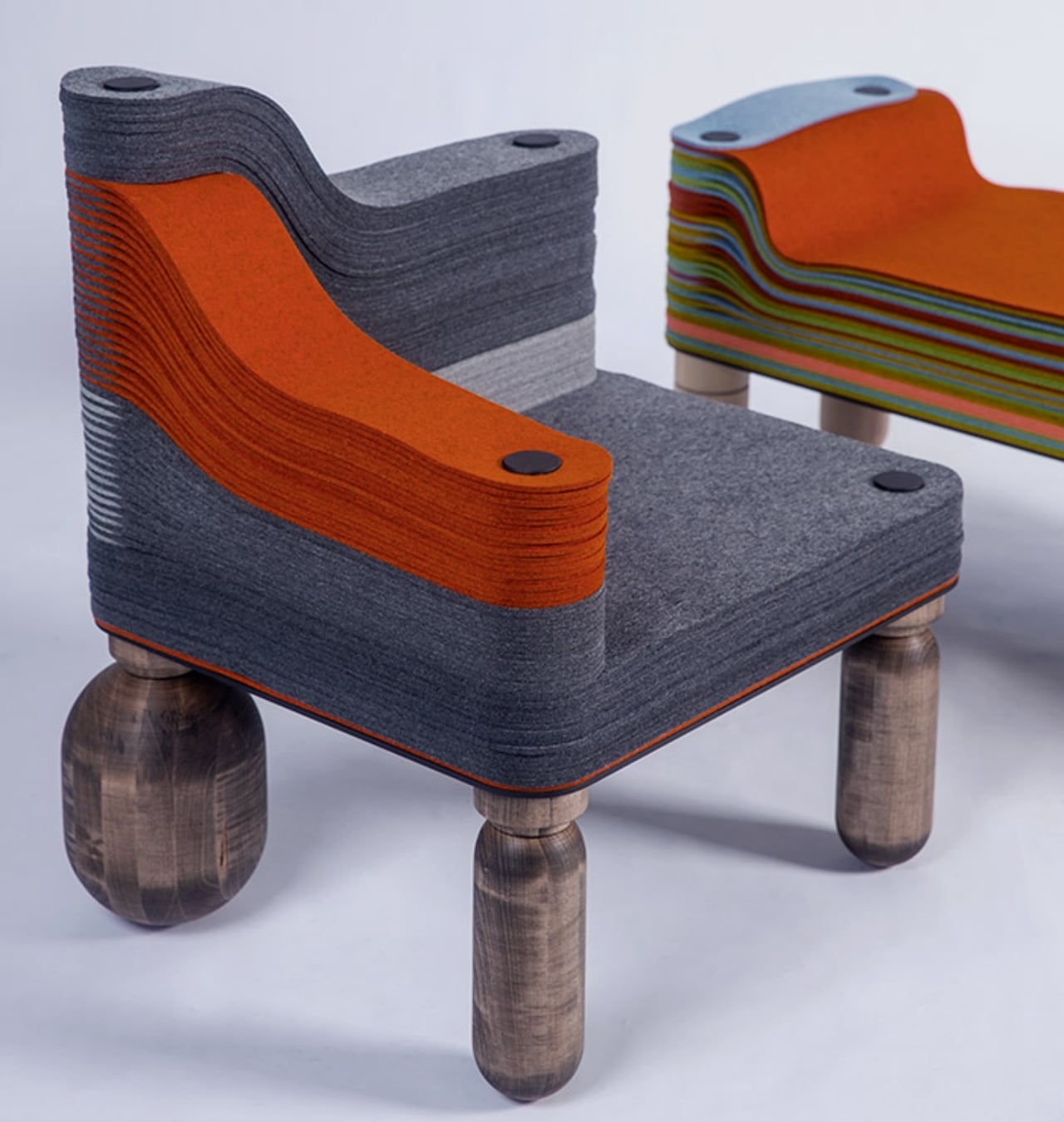
How many ways can you cut felt to turn it into something usable? Apparently, there are a lot of ways, especially if you let a machine decide. More than just a collection of designer furniture in the form of chairs, lounges, and benches, Stackabl is actually a new system that mixes machine precision with human creativity. In a nutshell, a specialized configurator software analyzes choices made by a user or a designer, like colors or dimensions, and selects high-quality felt offcuts that are then cut by robots for use in making furniture.
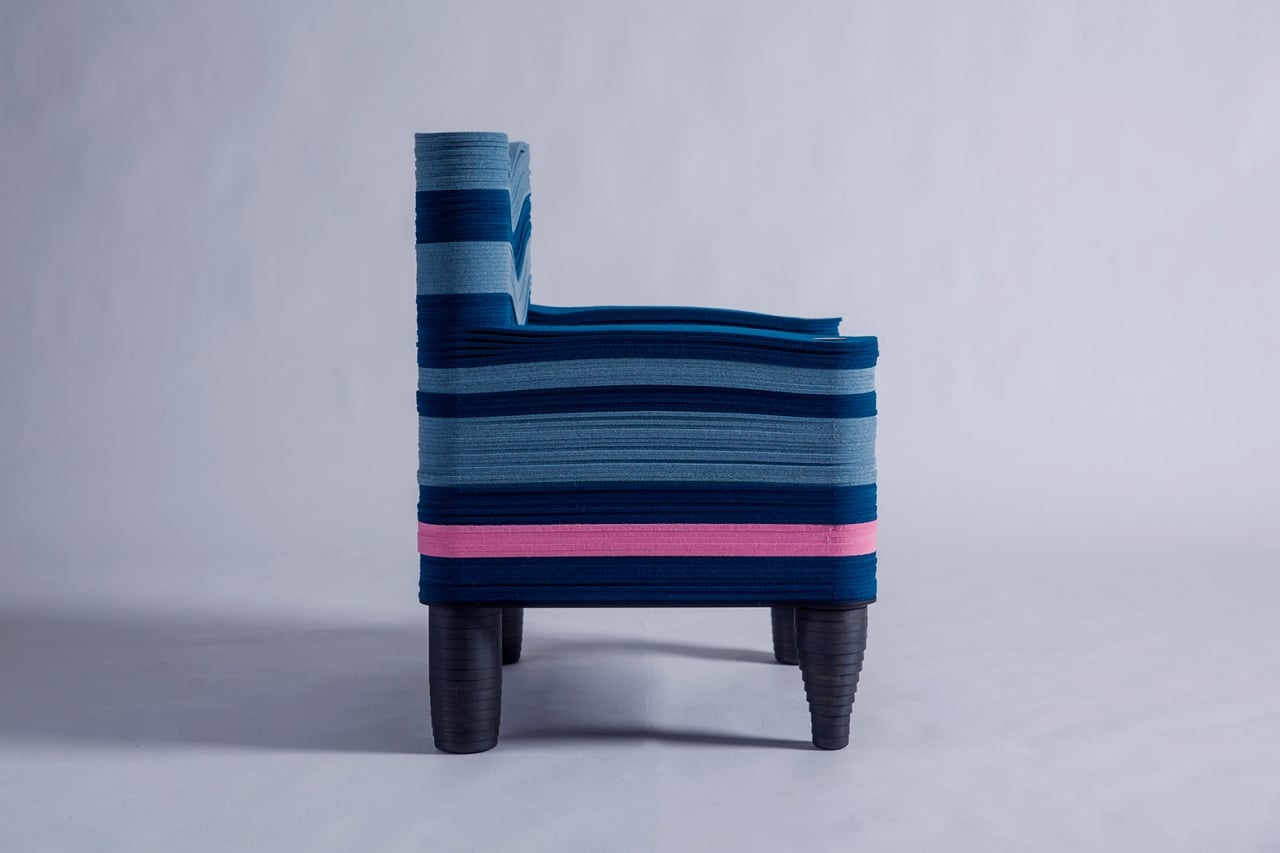
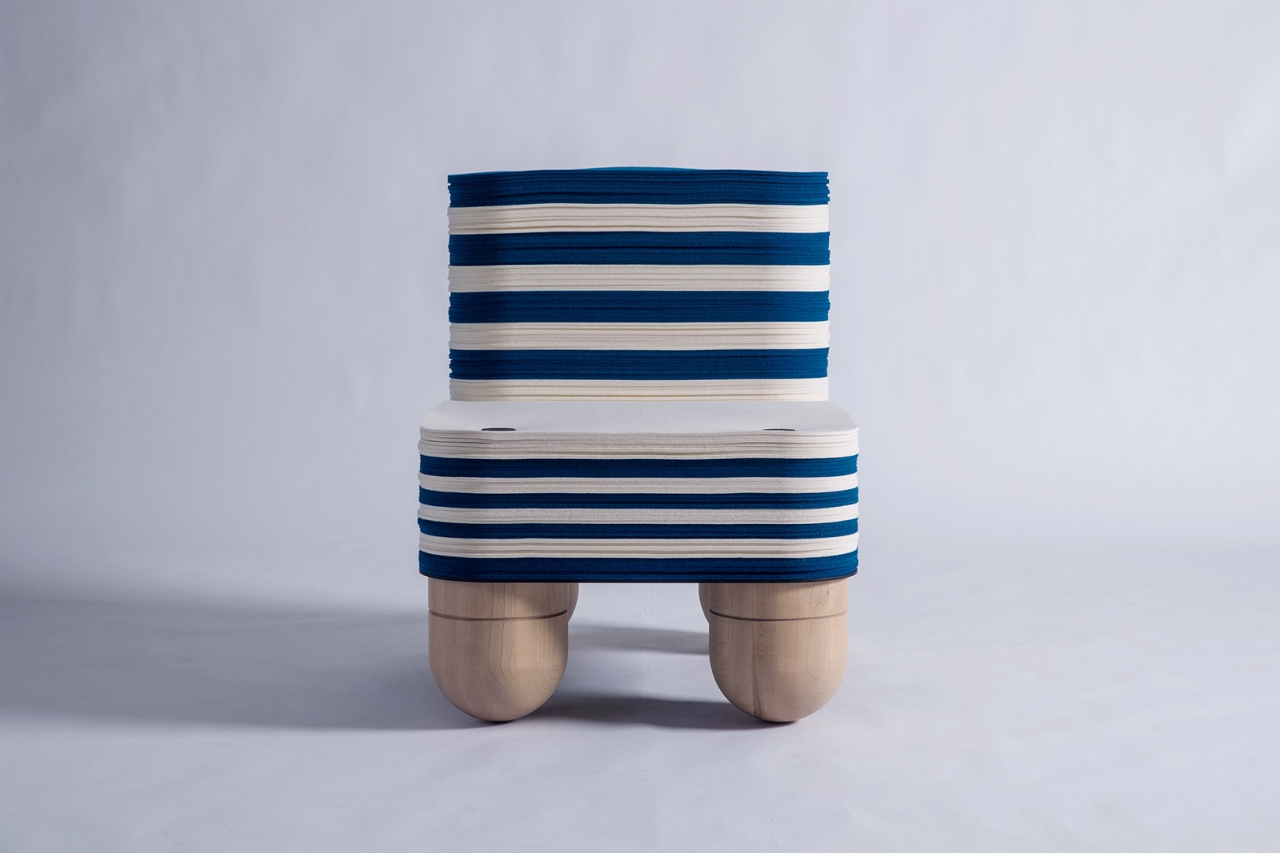
With limitations set by this configurator, six designers from Maison Gerard set out to create memorable designer furniture that looks almost wasteful if you didn’t know they were made from factory surplus and offcuts. Each designer expressed different ideas and influences, resulting in wildly different designs.
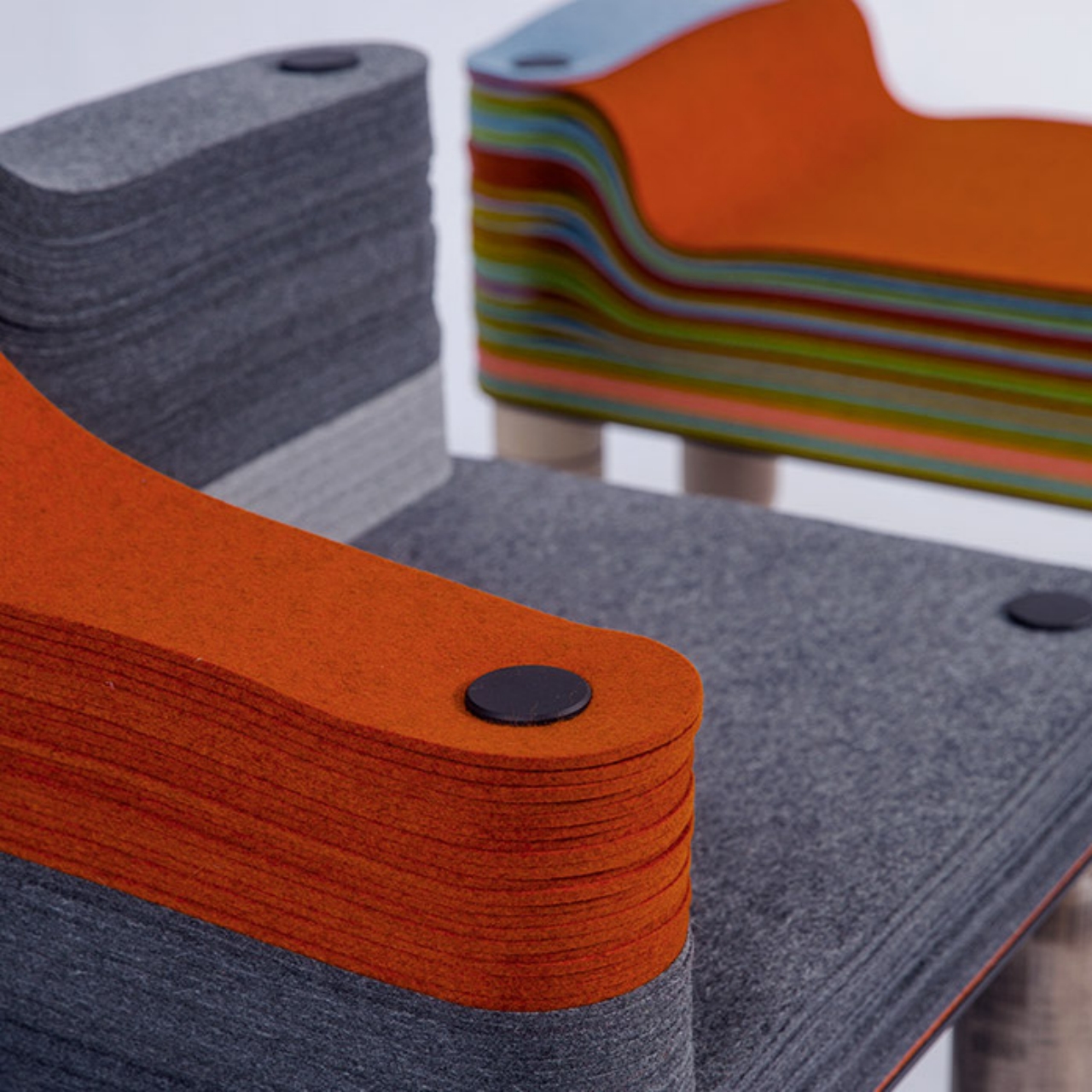
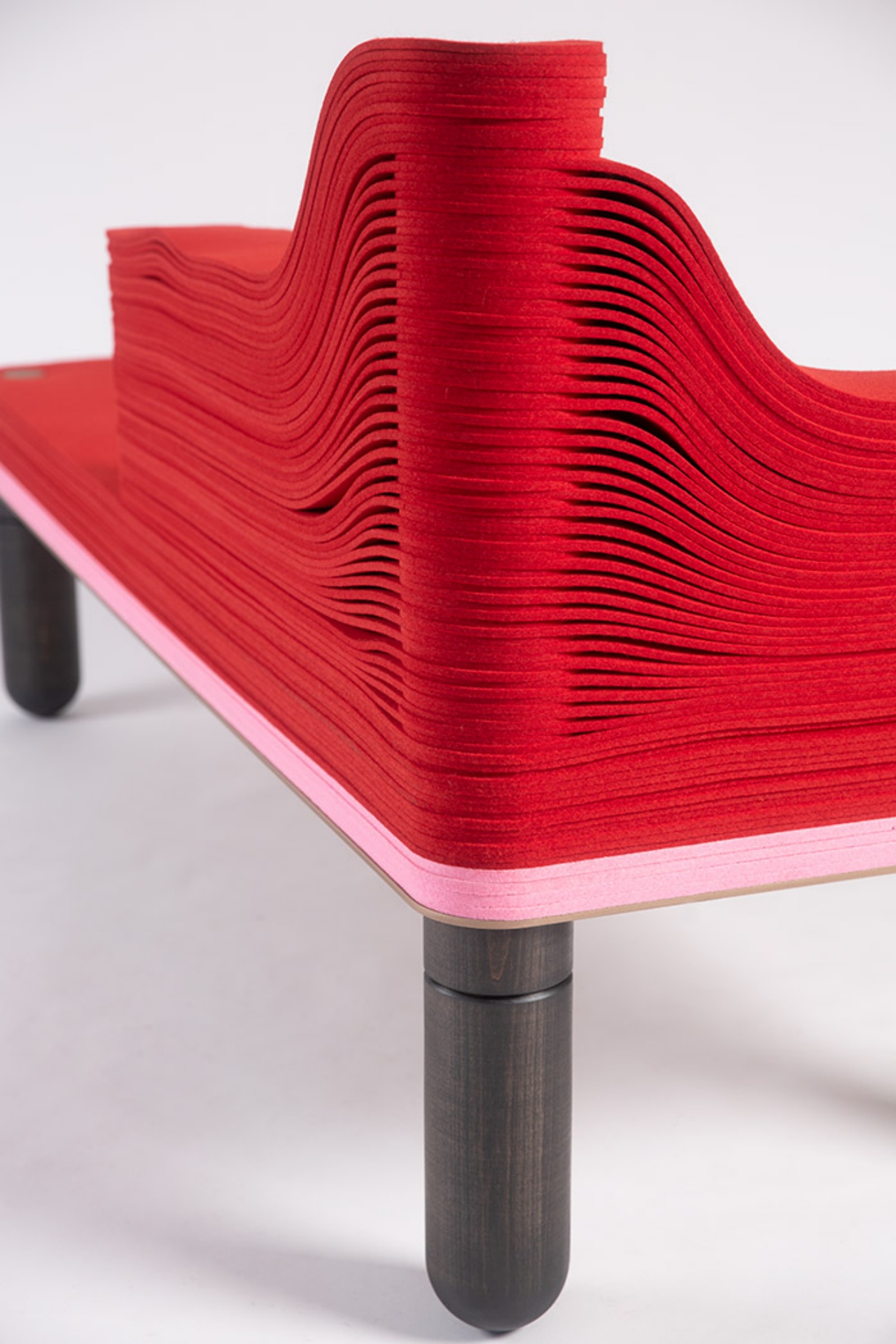
The Raki corner chair, for example, exudes a spirit of play and frivolity with its uneven form and non-uniform legs, while Dulces dining chair might remind you of the cake it’s named after, especially one with a sweet pink filling in the middle. The Madame chaise lounge’s predominantly red hue and sloping “shoulders” make it look exotic, while the Maxine bench’s mix of design influences is just as varied as its colors.
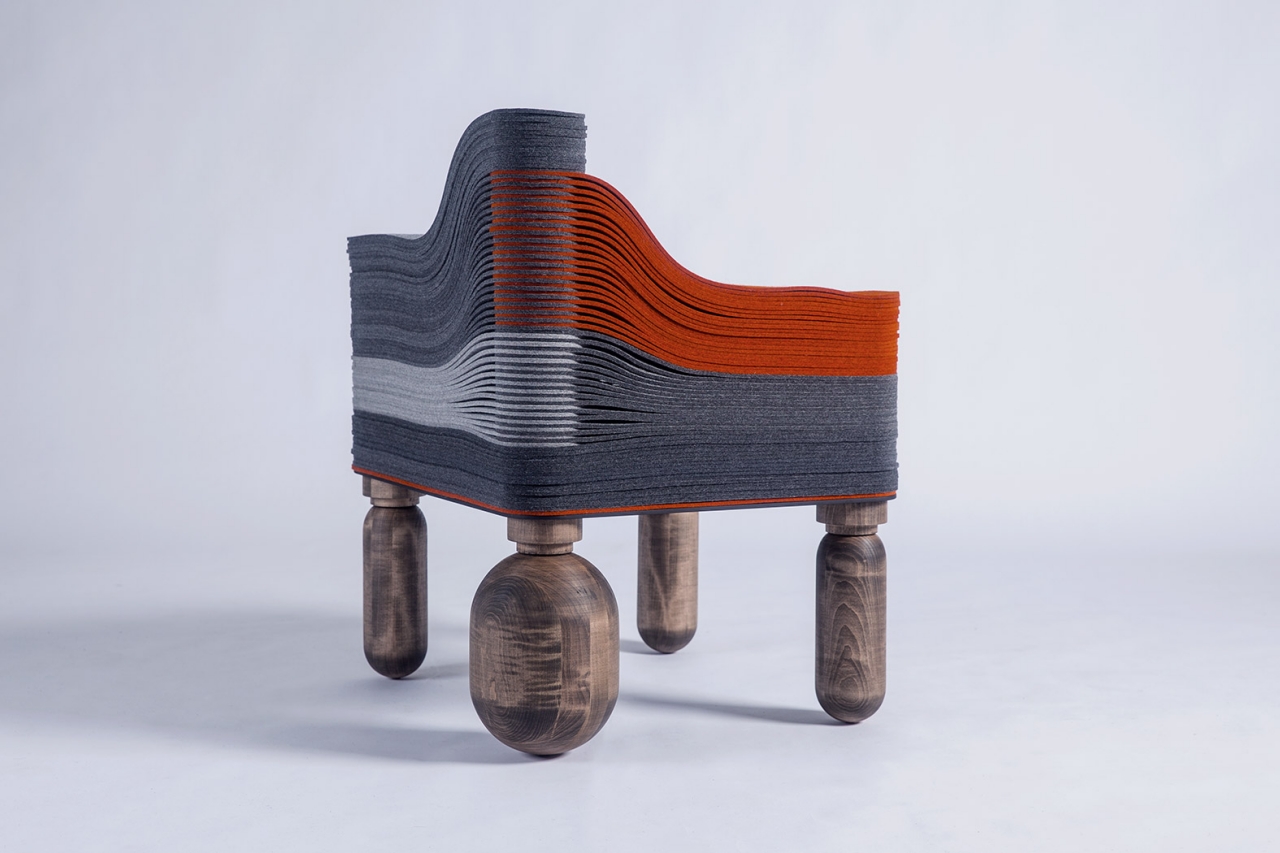
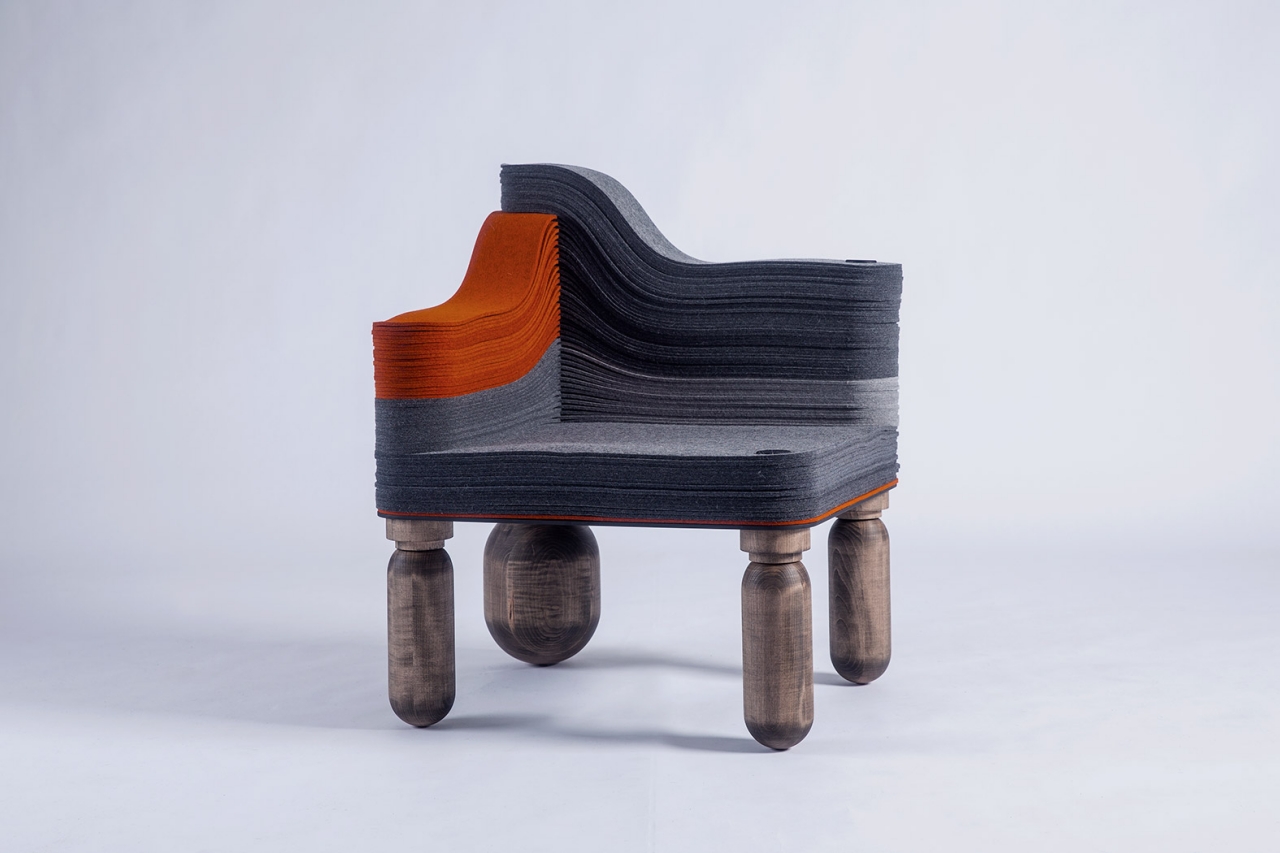

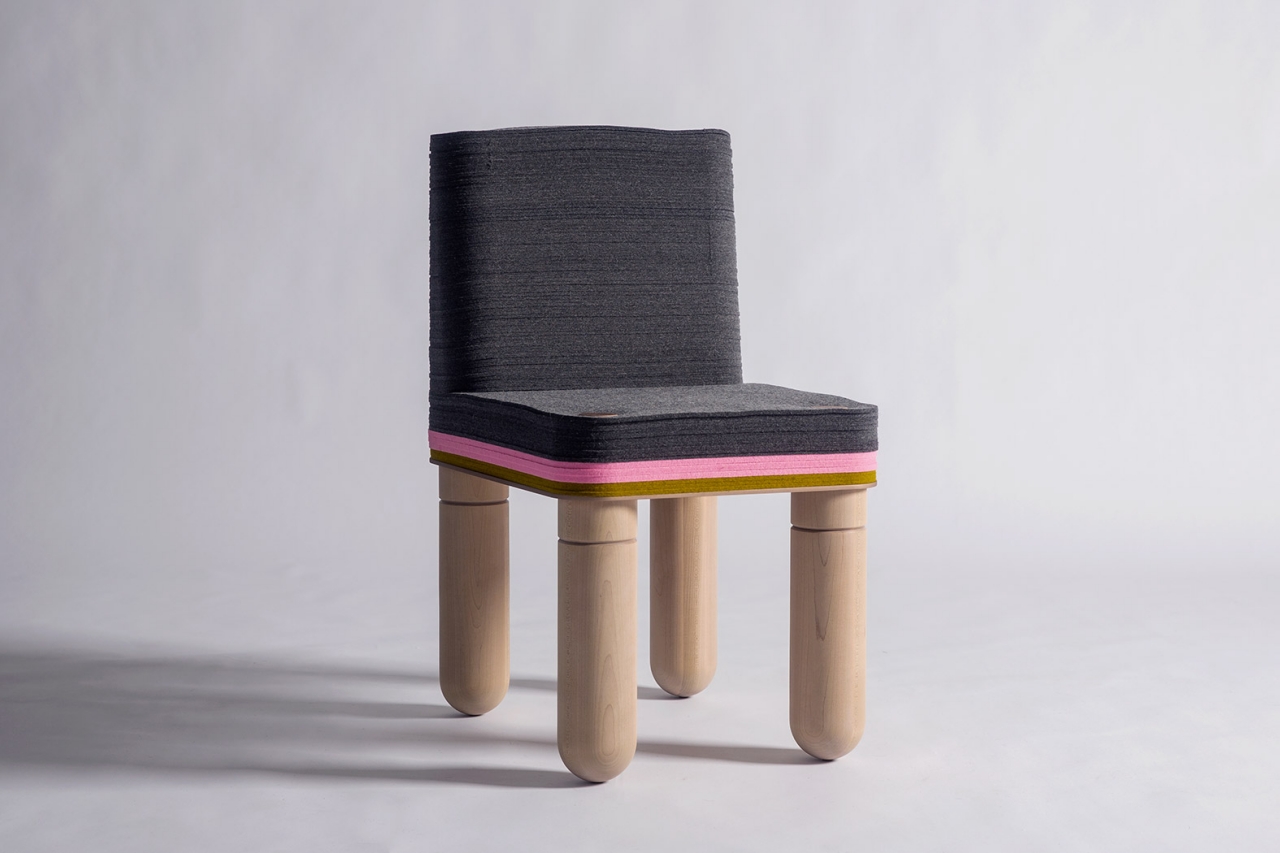
In addition to reusing materials that would normally be thrown away, Stackabl also puts the power and choice into the hands of regional manufacturers and designers. By keeping in touch with regional sources for these materials and allowing designers from that region to exercise their creativity, Stackabl tries to hit two birds with one stone in reducing carbon footprint while also enriching and empowering local economies.
